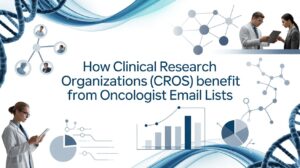The healthcare industry is undergoing a significant transformation with the integration of business analytics. By leveraging data-driven insights, organizations can enhance patient outcomes, streamline operations, and optimize resource allocation. This blog explores the stages of business analytics and its impactful applications within the healthcare sector.
Stages of Business Analytics in Healthcare
1. Descriptive Analytics
Descriptive analytics is analyzing any historical data to understand past performance and trends. Healthcare organizations use this stage to identify patterns in patient demographics, treatment outcomes, and resource utilization. For example, hospitals can track admission rates by season or monitor trends in chronic disease management.
2. Diagnostic Analytics
Diagnostic analytics delves deeper to uncover the reasons behind trends and outcomes. In the healthcare context, it can identify the root causes of patient readmissions, medication errors, or treatment delays. This stage often uses techniques like root cause analysis and statistical modeling to gain insights.
3. Predictive Analytics
Predictive analytics forecasts future trends based on historical and real-time data. In healthcare, this stage is instrumental in predicting patient demand, disease outbreaks, or the likelihood of treatment success. Machine learning and artificial intelligence are commonly used to enhance the accuracy of predictions.
4. Prescriptive Analytics
Prescriptive analytics provides actionable recommendations to optimize outcomes. For instance, healthcare providers can use prescriptive tools to recommend personalized treatment plans, allocate staff efficiently, or reduce operational bottlenecks.
The Role of Business Analytics in Healthcare
1. Enhancing Patient Care
Analytics tools help healthcare providers deliver personalized care by analyzing patient history, genetic data, and lifestyle factors. This enables early diagnosis, customized treatment plans, and proactive management of chronic diseases.
2. Optimizing Hospital Operations
Business analytics streamlines hospital workflows by improving scheduling, inventory management, and resource allocation. Predictive models can forecast patient admissions, helping hospitals prepare for peak periods and reduce wait times.
3. Improving Population Health Management
Population health analytics aggregates data from multiple sources to identify at-risk populations and develop targeted interventions. For example, analytics can help identify communities prone to diabetes or cardiovascular diseases, allowing for timely preventative measures.
4. Reducing Costs and Enhancing Efficiency
Cost containment is a major focus in healthcare. By analyzing operational inefficiencies and patient billing data, healthcare organizations can reduce waste, improve billing accuracy, and enhance financial performance.
5. Supporting Clinical Research
Business analytics accelerates clinical trials by identifying suitable patient cohorts, monitoring trial progress, and ensuring compliance with regulatory standards. This speeds up the development of new drugs and treatments.
6. Enhancing Patient Engagement
By leveraging patient feedback and behavioral data, analytics tools can help design better patient engagement strategies. For instance, healthcare providers can implement automated reminders for appointments or medication adherence.
7. Fraud Detection and Risk Management
Analytics plays a vital role in identifying fraudulent activities such as false claims and billing discrepancies. Advanced algorithms can detect anomalies in billing patterns, ensuring compliance and reducing financial risks.
8. Managing Public Health Crises
During pandemics or health crises, analytics provides real-time insights into infection rates, resource needs, and treatment efficacy. This enables governments and healthcare providers to respond effectively and allocate resources where they are most needed.
How to Apply Business Analytics in Your Healthcare Organization?
- Identify Goals: Define specific objectives, such as reducing patient re-admission rates or optimizing resource allocation.
- Choose the Right Tools: Select analytics platforms that align with your organization’s needs, such as predictive modeling software or dashboard solutions.
- Invest in Data Quality: Ensure your data is accurate, consistent, and compliant with regulatory standards.
- Build Skilled Teams: Train healthcare staff to interpret analytics results and integrate them into decision-making processes.
- Measure Success: Continuously evaluate the impact of analytics initiatives using predefined key performance indicators (KPIs).
Conclusion
Business analytics is revolutionizing the healthcare industry by providing actionable insights that improve patient care, streamline operations, and reduce costs. By understanding and implementing the stages of analytics—descriptive, diagnostic, predictive, and prescriptive—healthcare organizations can unlock new opportunities and drive sustainable growth. As data continues to shape the future of healthcare, embracing analytics is no longer optional but essential for success.
Visit our website Med Stream Data for more healthcare industry related information!







